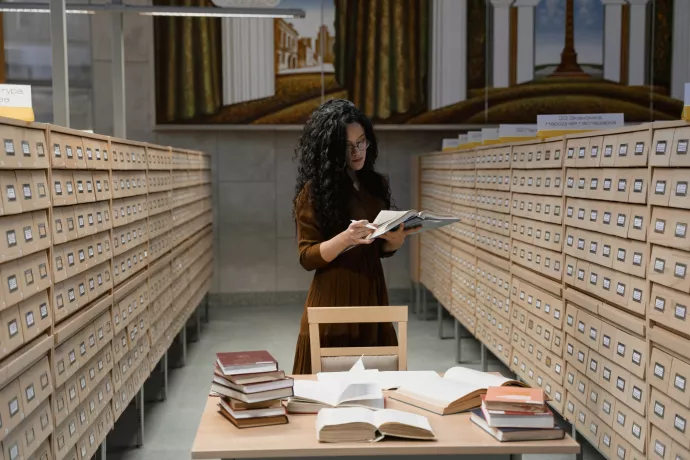
Teaching Students to Do Historical Research
Professor in Historical Studies wins prestigious teaching prize

Kevin Coleman has long understood the valuable stories that photographs, archives, and artefacts reveal, illuminating precious details about the past. The Canadian Historical Association (CHA) recently acknowledged his mission with a significant teaching award.
Coleman, an associate professor in the Department of Historical Studies, was recognized with the CHA’s 2023 Award for Excellence in Teaching with Primary Sources.
“I am thrilled to have had my teaching recognized by the Canadian Historical Association,” says Coleman. “History unfolds chronologically,” he tells his students. “That, in a nutshell, is the premise of the entire discipline.”
He then shows them how all sorts of interesting consequences flow from this presupposition.
“So, to understand a given chain of events we must first put our primary source materials into chronological order,” says Coleman.
“That’s the key that unlocks historical explanations. I make sure my students have that key and know how to use it.”
This CHA prize is awarded annually and recognizes educators at post-secondary institutions who teach students about using primary sources in critical, effective, sustained, and innovative ways.
A dedicated historian for over fifteen years, Coleman has many projects under his belt that explore U.S.-Latin American relationships, as well as citizenship and capitalism via visual culture. One of his first major undertakings was the digital humanities project Visualizing the Americas. This federally funded project, supported through the Social Sciences and Humanities Research Council of Canada, is a deep dive into the history of banana companies that operated in Latin America and the communities of workers who supported the cultivation and distribution of the fruit. According to the Visualizing the Americas website, the project “preserves rare, endangered records that are integral to the histories of the multinational banana companies…[digitizing] these archives and [making] them freely accessible to anyone in the world.”
Sharing these kinds of resources and teaching useful archival methodologies are part of what make Coleman such a stellar scholar, say his colleagues.
“He is exceptionally thoughtful in leading students not only to work carefully and critically with a wide variety of primary sources, but also to analyze the silences in the historical record,” says his co-nominators from the Department of Historical Studies, Professors Andreas Bendlin and Mairi Cowan.
“Kevin has extended his teaching with primary sources far beyond his official teaching capacity at the university to become a powerfully effective protector of endangered sources.”
The citation for the award states the following:
Dr. Kevin Coleman’s work with primary sources involves both innovative uses while teaching and efforts to collect and preserve vulnerable materials from the past for future research. His work with photographs was particularly noted by the committee. Using photos from the United Fruit Company’s archives, Dr. Coleman’s teaching emphasizes the value of understanding a document’s position within a chronology and how it can tell or hide a story. By moving beyond the photograph at face value, students can engage with the complicated questions that are hidden “outside of the frame.”
Professor Elspeth Brown, UTM’s Associate Vice-Principal, Research, also a faculty member from Historical Studies, further emphasizes his significant contributions as a researcher and an instructor.
“Kevin is an unusual historian in that he teaches students how to work closely with photographs as primary sources and this skillset requires formal analysis of visual texts, which is not typically part of a historian’s toolbox,” says Brown.
“He teaches his students to read the photographic record by asking questions about the form and composition, en route to addressing photographic meaning in a historical perspective and to consider what primary sources can – and cannot – tell us.”
Coleman received his award at a ceremony that was held on May 30.
Resources
- See Professor Coleman’s website for more information about his work.
- Find out more about the Canadian Historical Association.
